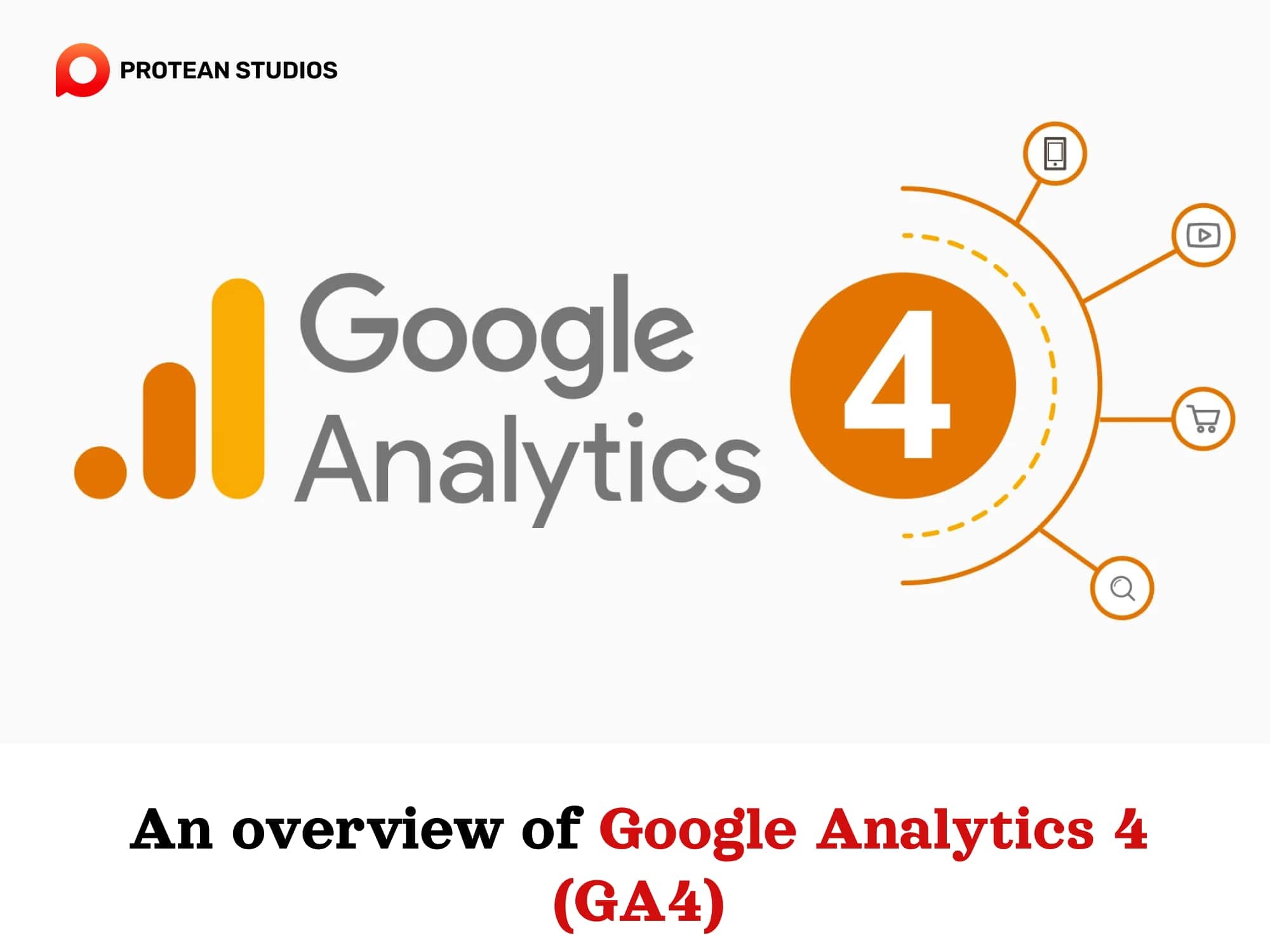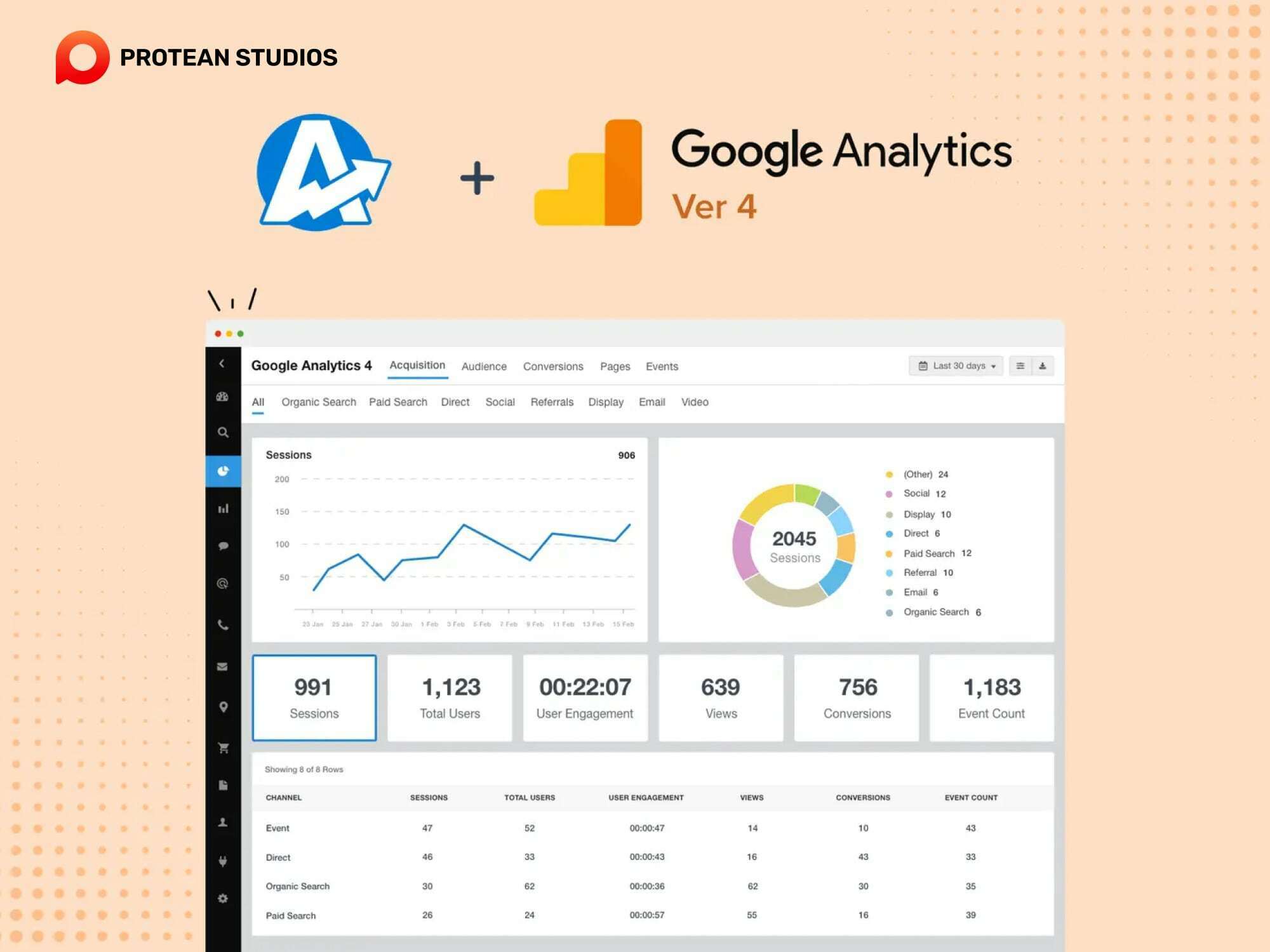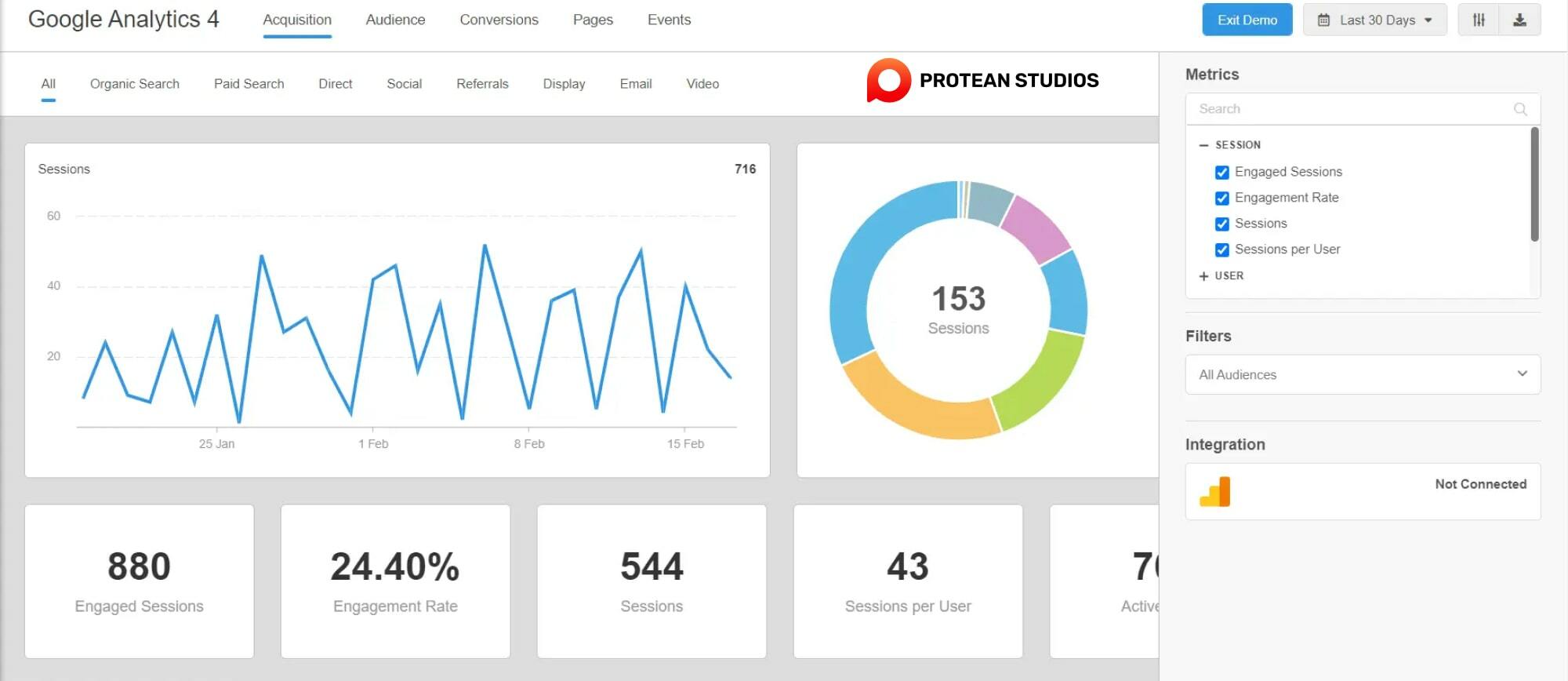Google Analytics 4 (GA4) plays an important role in the fields of digital marketing and website analytics. It will provide businesses with deeper insights into user behavior and engagement. Launched by Google, GA4 goes beyond traditional analytics because it offers a more sophisticated approach to understanding how users interact with digital properties.
About Google Analytics 4 (GA4)
Google Analytics 4 is the next generation of web analytics from Google, designed to address the evolving digital landscape and privacy regulations. Launched in October 2020, GA4 represents a significant leap forward from its predecessor, Universal Analytics. This tool offers many new features for understanding online user interactions.

GA4 is designed to meet the demands of a changing online environment, where user privacy concerns and evolving technology have reshaped the digital landscape. It introduces a more flexible and user-centric approach, emphasizing the importance of understanding the complete customer journey across various platforms and devices.
Related Article: Customer Data Platform (CDP) and All Basic Knowledge
The impacts of GA4 on businesses
The adoption of Google Analytics 4 will impact many businesses. GA4 is indispensable for attracting, expanding, and retaining a valuable customer base. Particularly, the following types of businesses stand to benefit the most:
Businesses Running Paid Advertising: GA4 is essential for businesses to use paid advertising, be it on Google Ads or social platforms. It provides crucial insights into the progress of ads, determining their success and profitability. GA4's ability to identify key performance indicators (KPIs) and optimize time and effort.
Deeper user insights: GA4's event-based model and cross-platform tracking provide a more comprehensive understanding of user behavior across different touchpoints. This allows for more targeted marketing, personalized experiences, and improved campaign optimization.
eCommerce Stores: If companies sell stuff online, GA4 is a must. It shows which company’s pages and products are doing well and which need improvement. This helps them know where to focus on your online store.
Learn more: Exploring Data-Driven Marketing: Definition, Benefits, And Role
What distinguishes GA4 from Universal Analytics?

Google Analytics 4 (GA4) and Universal Analytics are two distinct versions of Google's analytics platform. Each with its own set of features and improvements to improve their functions. Below are some key distinctions between GA4 and Universal Analytics:
Features | Universal Analytics | Google Analytics 4 |
Data model | session-based, focused on pageviews and website visits. | Event-based tracking tracks individual user interactions across platforms (websites and apps) as events. This provides a more granular and user-centric view of behavior. |
Privacy focus | Less emphasis on privacy, limited control over data collection, and user consent. | Built with privacy in mind, it offers features like anonymization, data deletion, and consent mode to follow regulations. |
Reporting and interface | Predefined reports have limited customization options. | a customizable reporting interface with drag-and-drop functionality, allowing for personalized dashboards and reports. |
Integration | Separate tracking for websites and apps. | Integrates data from websites and apps, offering a unified view of user behavior across different channels. |
Machine learning | Limited application of machine learning. | Leverages machine learning for predictive capabilities like forecasting future conversions and churns and automating tasks. |
Event-Based Tracking | Relies on predefined goals and conversions. | Places a greater emphasis on event-based tracking, allowing businesses to capture a broader range of user interactions. This tool can track specific actions that matter to the business, providing more flexibility in data collection. |
Setting up Google Analytics 4 in Four Easy Steps
GA4 is the latest version of Google's web analytics platform. It offers new features and capabilities for measuring and optimizing your online presence. Thus, if you want to use this platform, you can set it up in four steps, as follows:
1. Setup the Google Analytics app
To use GA4, you need to create a new app property in your Google Analytics account. This will allow you to collect data from your website, app, or both using a single tracking code.
To create an app property, go to your Google Analytics account and click on the Admin button. Then, under the Property column, click on the Create Property button. Choose App as the property type and follow the instructions to set up your app property.
2. Become acquainted with GA4

GA4 has a different interface and terminology than the previous versions of Google Analytics. For example, instead of sessions and pageviews, GA4 uses events and parameters to measure user interactions. It also introduces new reports and analysis tools that help you understand your users' behavior and preferences.
3. Establish an action plan
Before you start collecting and analyzing data with Google Analytics 4, you need to have a clear idea of what you want to achieve with your online presence.
“What goals and objectives does your business have?
Who are your target viewers, and what are their specific needs?
How do you want to measure your performance and success?”
These are some of the questions that you need to answer to create an action plan for your GA4 implementation. You can use the Measurement Plan template that Google provides to help you define your KPIs and data collection strategy. Besides, you can also use other platforms to analytic data, click the blog to know more: Data Management Platforms (DMPs)
4. Integrate GA 4
Once you have your action plan ready, you can start integrating GA4 with your website, app, or both. You can use the Google Tag Manager (GTM) or the global site tag (gtag.js) to install the GA4 tracking code on your website.
For apps, you need to use the Firebase SDK or the Google Analytics SDK to integrate GA4. You can also use the Data Stream settings in your app property to configure how you want to collect and process data from your website or app.
After you have integrated GA4, you can start collecting and analyzing data from your online presence. Businesses can use the various reports and analysis tools that GA4 offers to gain insights into the users' behavior, preferences, and outcomes.
Are you prepared to begin with GA4?
Are you ready to embark on your GA4 journey? Transitioning to Google Analytics 4 marks a pivotal step in evolving the company's analytics strategy. Discover the advanced features, user-centric approach, and cross-platform capabilities that GA4 brings to the table. Ensure businesses harness deeper insights into user behavior and stay ahead in the dynamic landscape of digital analytics.




